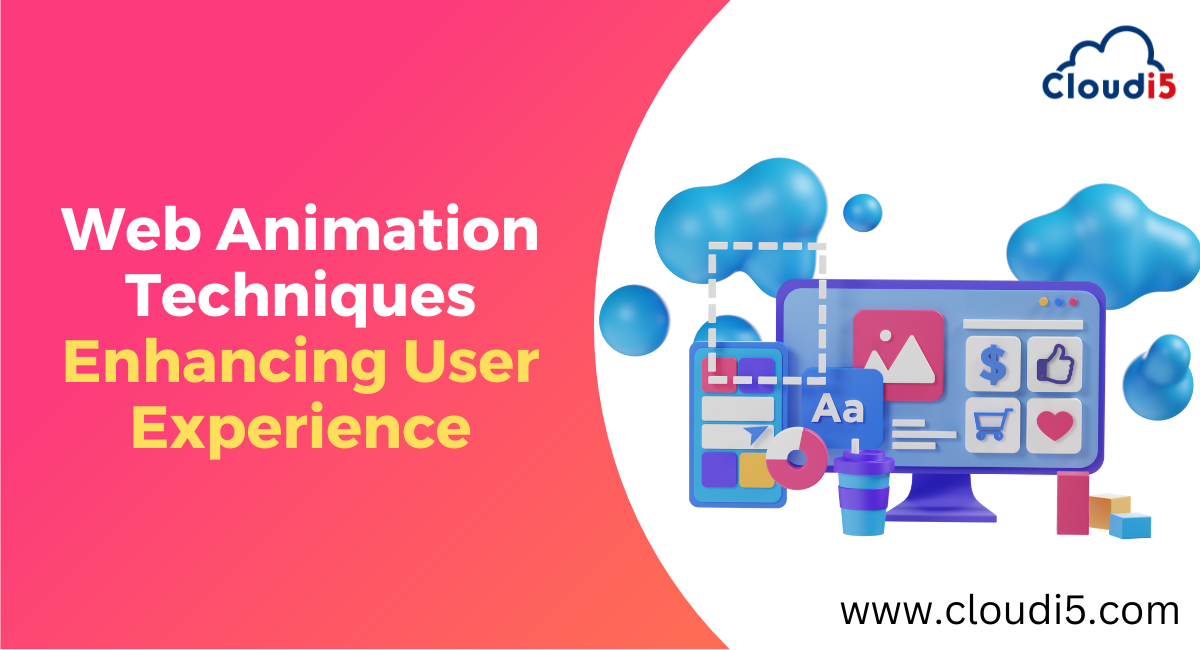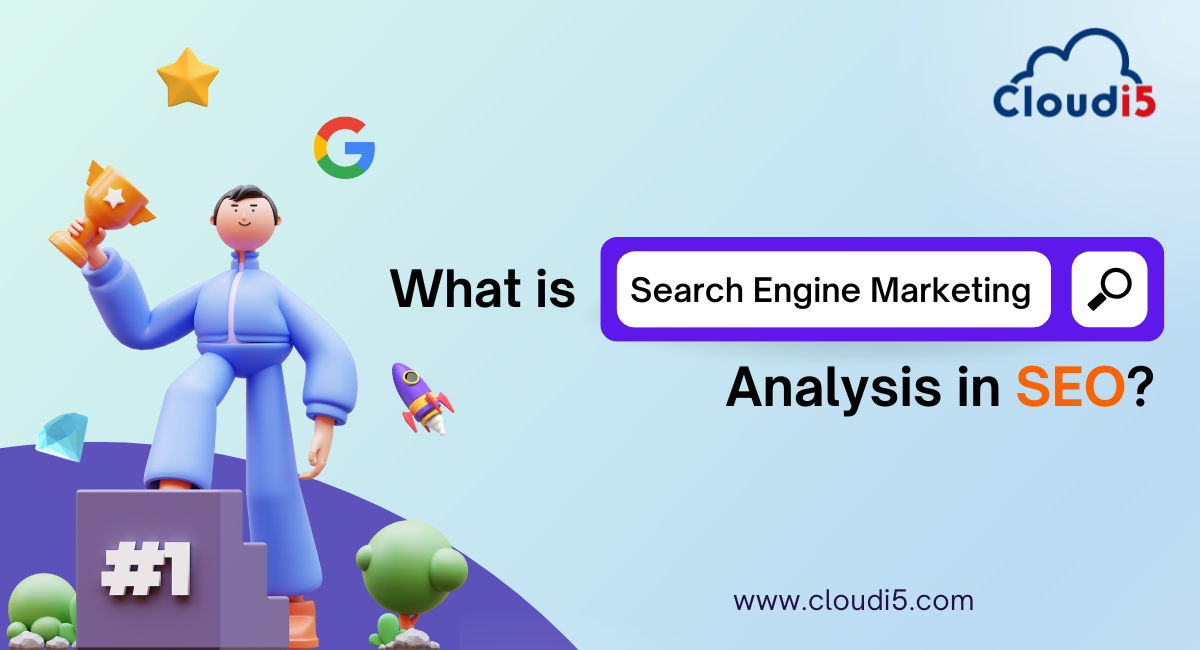
Web Animation Techniques: Enhancing User Experience
Greetings from the fascinating world of web animation, where user experience soars, pages come to life, and pixels dance! Animation isn't just a visual pleasure in the always-changing world of web development; it's the secret sauce that boosts user involvement and engagement.
Web animation techniques provide a dynamic experience by transforming static screens into magical digital landscapes with subtle transitions that lead the eye and deep storytelling components. Come along as we explore the science and art of these captivating movements and how they turn the user experience into a captivating voyage through the virtual universe.
Understanding the roles of Web Animations:
In web design, animations are essential components that give a static digital environment life, acting as more than just decorative accents. Web Animation Development is extremely important in the world of e-commerce websites, as it improves user experience and influences customer engagement and conversions. Their importance stems from their capacity to hold users' interest, leading them to an immersive experience and improving the user experience as a whole. Through smooth navigation and natural interaction made possible by these dynamic movements, confusion is reduced, and browsing is made more pleasurable. Web Animation Development is an essential component of a web development company, involving the strategic integration of motion and interactivity into digital experiences. Web developers who specialize in this discipline are entrusted with animating static web pages to give them motion, interactivity, and visual engagement.
In web design, animations are the dynamic threads that deftly weave a tapestry of improved user experiences. Benefit of Web design for e-commerce businesses is that it plays a major role in an organization's success, providing several benefits that directly impact user experience, brand perception, and overall business performance. Their role is multifarious; they act as visual cues to help users navigate a smooth digital environment. Animations respond to human actions instantly and intuitively, giving users a feeling of familiarity and control. They emphasize structure and flow inside a webpage to streamline navigation, making it more interesting and lowering cognitive strain. Additionally, animations give interactions individuality, bringing the UI to life and fostering strong emotional bonds with users. Additionally, they support storytelling by skillfully conveying intricate ideas or stories in an absorbing and visually captivating way.
Animations have been skillfully incorporated into a number of websites to improve user experience and create captivating interfaces. The website of the payment processing company Stripe is one prominent example. Throughout its website, Stripe uses understated but effective animations, like seamless page transitions and interactive features that react to user input. The browsing experience is made intuitive and visually appealing by these animations, which also serve to guide users and maintain a unified flow. The Apple website is a fantastic example of another creative usage of animations. Apple's website contains dynamic and slick animations that highlight product characteristics, giving consumers an engaging and interactive experience as they explore the company's devices. By efficiently communicating information, these animations encourage users to interact with the content. These effective instances show how the thoughtful and deliberate use of animations can greatly improve the usability, engagement, and general aesthetic appeal of a website.
Types of Web Animations:
Animations come in many forms in web development, which makes user experiences lively and captivating. The following are explanations of many animation styles that are frequently employed in web development:
1. CSS Animations: Animations made with CSS (Cascading Style Sheets) may be created within the browser by utilizing properties like transition and keyframes. Simple transitions, such as fading or sliding, or more intricate keyframe animations that let designers specify several steps of an animation can be used in these animations.
Example: Fade-in and slide-out transitions when hovering over a button.
2. JavaScript-based Animations: JavaScript has a wide range of capabilities for producing online animations. jQuery, GreenSock (GSAP), and anime.js libraries allow developers to create sophisticated animations by manipulating DOM components, performing transformations, and defining motion sequences dynamically via JavaScript code.
Example: Animated charts or graphs made with the Chart.js library.
3. SVG Animations: Scalable Vector Graphics (SVG) is a graphics format that can be modified and animated with CSS and JavaScript. SVG animations involve modifying SVG attributes such as paths, shapes, colours, and gradients to generate a variety of animated effects directly inside the SVG markup or via scripting.
Example: Morphing forms or paths
Canvas Animation: The HTML5 canvas> element supports dynamic display of visuals and animations via JavaScript. Canvas animations involve programmatically drawing and manipulating shapes, pictures, and pixels, allowing developers to construct intricate and interactive animations, games, and visualizations.
Example: HTML5 canvas-based games such as a simple maze game or particle effects
WebGL Animations:
WebGL (Web Visuals Library) is a JavaScript API that allows compatible browsers to render dynamic 2D and 3D visuals. It makes use of the GPU to generate high-performance visuals and animations that are appropriate for games, simulations, and immersive visual experiences.
Example: 3D interactive models or immersive landscape visualizations
Scroll Animations:
Scroll-based animations cause motion effects to be triggered as users scroll through a webpage. These animations, created using CSS, JavaScript, or libraries such as ScrollMagic, enable dynamic modifications based on the user's scroll position, resulting in compelling storytelling and visual experiences.
Example: Background pictures move at varying speeds while scrolling in parallax scrolling effects.
Best Practices for implementing web animations:
Adhering to guidelines and best practices when adding animations to a website ensures a balanced blend of visual engagement and functional usability. A cornerstone is purposeful implementation: animations should serve a clear goal, whether it's directing users, providing feedback, or boosting visual narrative. Prioritizing user experience (UX) by ensuring animations are intuitive, boosting rather than inhibiting navigation and information consumption is critical.
Considerations that include performance, usability, and subtlety serve as important touchstones for a flawless user experience when digging into the integration of animations on a website. Performance is a major issue; animations should be enhanced without burdening, emphasizing lightweight solutions to avoid slow loading times and maintain overall site performance. The concept of usability emerges as a beacon, guiding the design process—animations must be straightforward, complementing the text rather than complicated navigation or comprehension.
Furthermore, subtlety emerges as an art form; controlled and deliberate animations show refinement, directing attention without being dominating. Striking a precise balance between appealing visual components and functional usefulness guarantees that animations increase the user experience on the website, infusing it with a nuanced yet intuitive charm.
Tools and Resources for Web Animation Development:
Creating appealing online animations necessitates the use of a wide range of tools and resources that enable developers and designers to bring digital experiences to life. Web animation development is a rich tapestry weaved with CSS animation libraries, JavaScript animation frameworks, SVG animation tools, interactive animation platforms, and other tools. Each tool and resource acts as a brushstroke on the canvas of creativity, bringing unique capabilities and features to websites and applications to add motion, interactivity, and visual appeal.
There are numerous web animation tools, libraries, and resources available to meet a variety of goals and ability levels. Here's a rundown of the various categories, with examples:
CSS Animation Resources:
Animate.css: A popular CSS toolkit that offers a variety of predefined animations for web elements, making it simple to apply animations without writing complex code.
Hover.css: Provides a set of hover effects and transitions for buttons, links, and other components to improve interactivity.
JavaScript Animation Libraries:
GreenSock (GSAP: sophisticated JavaScript animation toolkit that allows you to create complicated, high-performance animations.
anime.js: A small and versatile JavaScript animation toolkit that supports SVG animations.
Velocity.js: Provides quick and smooth animations with a performance focus.
SVG Animation Tools:
Snap. svg: JavaScript package that allows for animation and interactivity while dealing with SVG.
SVG.js: Allows JavaScript manipulation and animation of SVG elements.
Adobe Animate: Vector-based animation software that can be exported to SVG format.
Canvas Animation Frameworks:
p5.js: A JavaScript toolkit for HTML5 canvas creative coding and visual animations.
three.js: A powerful 3D library for producing 3D animations and visualizations with WebGL.
Animation Design Tools:
Adobe After Effects: Expert software for producing complex animations and motion graphics.
LottieFiles: An animation creation, sharing, and implementation platform based on the Lottie animation format.
Interactive Animation Tools:
Webflow: Allows for the design and creation of interactive animations without the use of code.
Tumult Hype: Allows you to create interactive HTML5 animations and presentations.
Online Resources and Communities:
CodePen: A platform for experimenting with HTML, CSS, and JavaScript animations with a large collection of user-created examples.
GitHub: A repository for open-source animation libraries, frameworks, and code repositories.
Stack Overflow: A community-driven Q&A forum for troubleshooting animation-related coding challenges.
Tutorials and Courses:
MDN Web Docs: Offers in-depth guidance and documentation on CSS, JavaScript, and web animation techniques.
Platforms such as Udemy, Coursera, and Skillshare provide online courses in web animation, CSS/JavaScript animation, and similar topics.
These tools and resources appeal to a wide range of skill levels, from novice to advanced developers, and offer a variety of alternatives for creating interesting and interactive animations for web development projects.
Conclusion:
Finally, Web Animation Techniques are effective tools for improving the entire user experience across digital platforms. Web developers and designers infuse vitality, interactivity, and visual engagement into websites and applications by intelligently adding animations. Thoughtfully designed animations improve usability, manage user activities, and effectively communicate information, resulting in improved user engagement and pleasure. As technology advances, the artful integration of web animations remains a critical component in creating immersive and engaging digital experiences, eventually impacting how people interact with and interpret online information.
Trusted By












Leave Comments